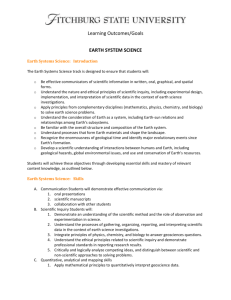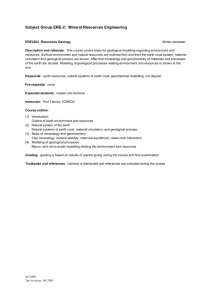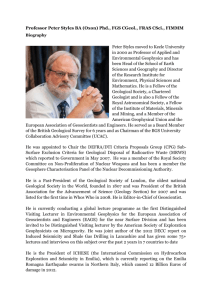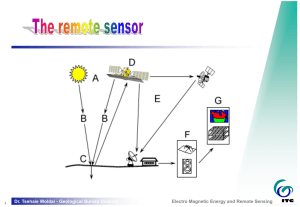99301 Remote Sensing and Geological Mapping.
advertisement
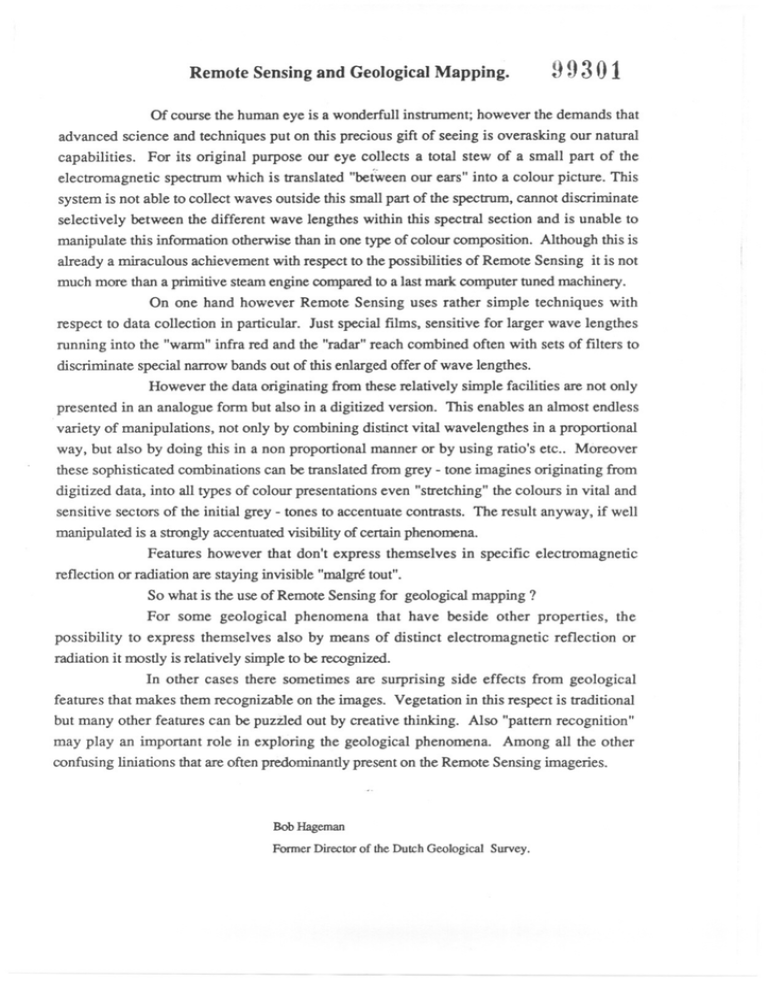
Remote Sensing and Geological Mapping. 99301 Of course the human eye is a wonderfull instrument; however the demands that advanced science and techniques put on this precious gift of seeing is overasking our natural capabilities. For its original purpose our eye collects a total stew of a small part of the electromagnetic spectrum which is translated "between our ears" into a colour picture. This system is not able to collect waves outside this small part of the spectrum, cannot discriminate selectively between the different wave lengthes within this spectral section and is unable to manipulate this infonnation otherwise than in one type of colour composition. Although this is already a miraculous achievement with respect to the possibilities of Remote Sensing it is not much more than a primitive steam engine compared to a last mark computer tuned machinery. On one hand however Remote Sensing uses rather simple techniques with respect to data collection in particular. Just special films, sensitive for larger wave lengthes running into the "warm" infra red and the "radar" reach combined often with sets of filters to discriminate special narrow bands out of this enlarged offer of wave lengthes. However the data originating from these relatively simple facilities are not only presented in an analogue form but also in a digitized version. This enables an almost endless variety of manipulations, not only by combining distinct vital wavelengthes in a proportional way, but also by doing this in a non proportional manner or by using ratio's etc.. Moreover these sophisticated combinations can be translated from grey - tone imagines originating from digitized data, into all types of colour presentations even "stretching" the colours in vital and sensitive sectors of the initial grey - tones to accentuate contrasts. The result anyway, if well manipulated is a strongly accentuatedvisibility of certain phenomena. Features however that don't express themselves in specific electromagnetic reflection or radiation are staying invisible "malgr6tout". So what is the use of Remote Sensing for geological mapping? For some geological phenomena that have beside other properties, the possibility to express themselves also by means of distinct electromagnetic reflection or radiation it mostly is relatively simple to be recognized. In other cases there sometimes are surprising side effects from geological features that makes them recognizable on the images. Vegetation in this respect is traditional but many other features can be puzZled out by creative thinking. Also "pattern recognition" may play an important role in exploring the geological phenomena. Among all the other confusing liniations that are often predominantly present on the Remote Sensing imageries. Bob Hageman Fonner Director of the Dutch Geological --- Survey. -



